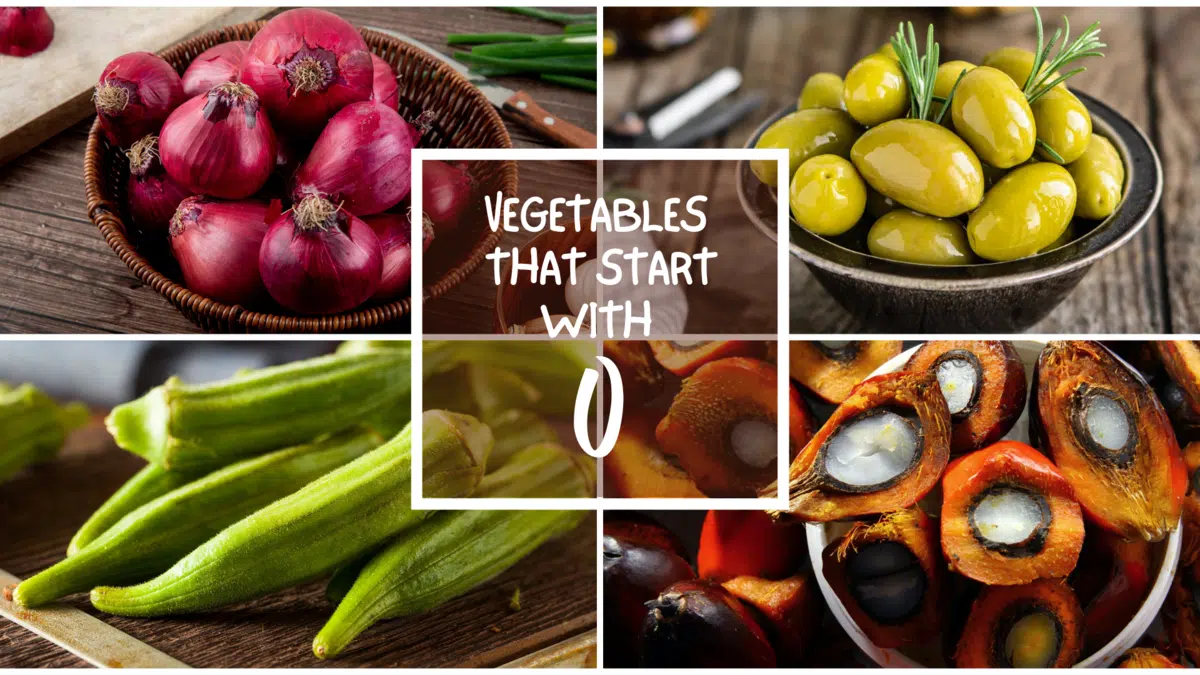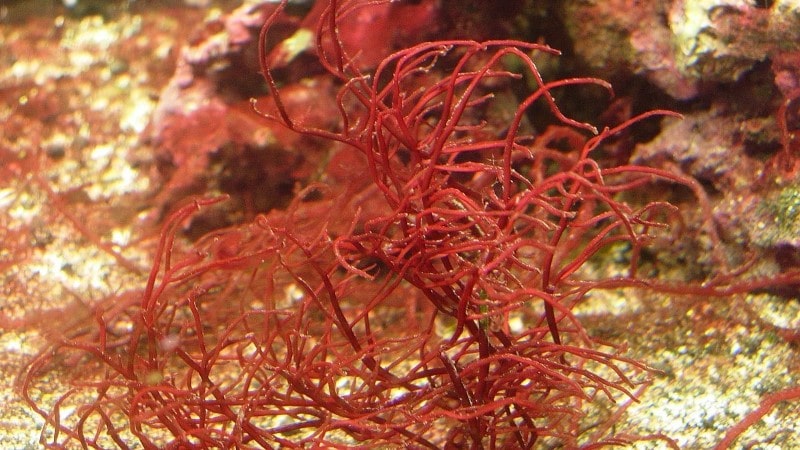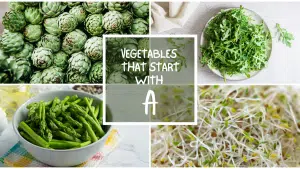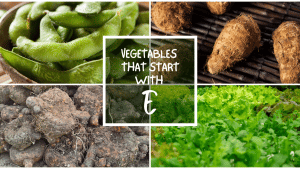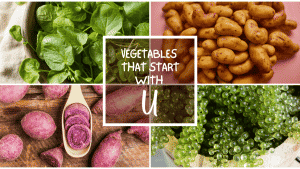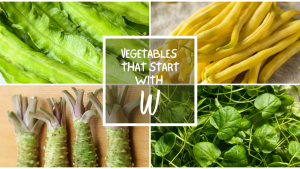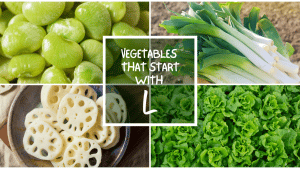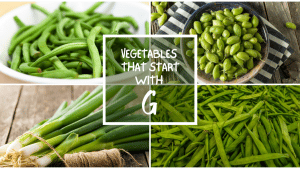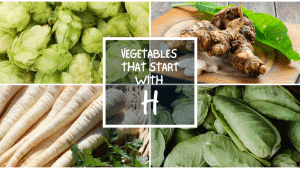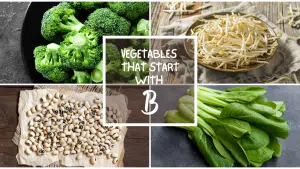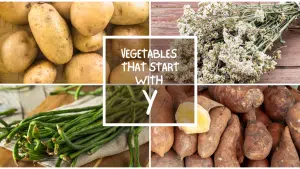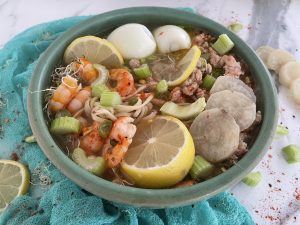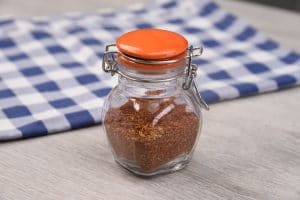All The Vegetables That Start With O
Important Note: When you buy through our links, we may earn a commission. As an Amazon Associate we earn from qualifying purchases. Content, pricing, offers and availability are subject to change at any time - more info.
Vegetables should be treated as the core of our diet that nature provides. A healthy diet cannot lack vegetables. The list below of vegetables starting with the letter o is an essential one since it will help boost your knowledge of the vegetables around the world, and you will be able to navigate better on unfamiliar and familiar vegetables. As a reader, you need to know the vegetables that start with letter o so that you can expand your vegetable diet, know where to purchase them, understand their potential health benefits, their origin, and also learn how to prepare them. O is a rarely used letter and therefore has countable vegetables beginning with the letter o. Vegetables that begin with o include onion, olives, oregano, orache, okra, ogonori, and oil palm. Here is detailed information on all the vegetables that start with o:
Olives
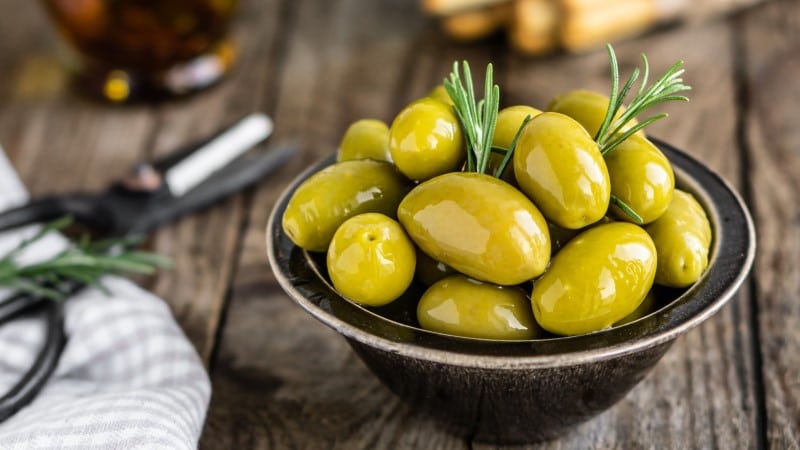
The scientific name of olives is Olea europaea. Olives are found in a group of fruits known as drupes and are related to peaches, mangoes, and cherries. Olive, when considered botanically, it is a fruit, but most people use it as a vegetable when cooking. Olives add a salty and savory flavor to your recipes and dishes. The olive trees grow in many places but are common in the Mediterranean region. You can get a wonderful taste from combining olives with fish and poultry. Olives are typically in two colors; black and green. You can get olives in many dishes, from martinis to olive oil. The most popular variety of olives is green-black olives (that are eaten raw), Spanish green olives (that are eaten after being pickled), and California olives (pickled after being ripened). Most olives are not eaten fresh because they are very bitter. Therefore, they are cured and fermented to reduce the bitterness. The bitterness can cause a stinging effect in your throat. Some olives have a salty to a mild taste.
The olives have a fresh aroma like that of green grass. A regular olive weighs approximately five grams. Olives are green and turn black when they mature. At the same time, there are some olives that remain green even when ripe. You can use olives as an ingredient in recipes such as salads, pizza, and sandwiches. For salads, add the olives fresh on top of the salad or the roasted olives at the end after preparing the salad to preserve its texture. You can enjoy this vegetable fresh from the tree or cook it. It is commonly processed with brine for it to be edible.
The majority of olives in the Mediterranean area, about 90%, are used in the making of olive oil. Olives are a rich source of vitamin E, fiber, protein, fat, calcium, iron, sodium, copper, and some anti-oxidants. Consuming olives is proven to have potential health benefits such as protecting one from cancer, improving the health of the heart, and performing anti-oxidant activities. However, it would be best if you consumed olives in moderate amounts to avoid causing any health risks.
It is easy to purchase olives in the united states. They are available in most supermarkets and grocery stores but not in their new form. Olives are not sold fresh because of their infamous bitterness. Thus, they are canned and usually soaked in brine.
Onion

The scientific name of onion is Allium cepa L., and onion is also known as a common onion or bulb onion. While onion may fail to be your number one vegetable, it is an indispensable ingredient in cooking today. Onions are the most popular vegetable in America and even around the world. Its zesty taste makes it suitable for any meal of the day. An onion is an edible bulb that is found in different varieties. Onions have different sizes, shapes, and colors. Onions are in various colors, such as red, white, yellow, and purple. It is an incredibly versatile vegetable that brings flavor and depth to many dishes. Onions are found in the allium genus and have close relations to leek and garlic.
The vegetable is believed to have originated from central Asia, western Pakistan, and Iran. Cutting onions will make you cry literally, but it will be worthwhile with the taste and flavor it will bring to your dishes. Onions are pungent when cutting and have a chemical substance that irritates the eyes. You can use your onions sliced, diced, chopped, whole, or liquidized. The onion will simply make your meal have a better taste. You can pair onions that are fried with pasta sauce, ribs, and even cheesesteaks to get a delicious taste. Onions are mostly served as a vegetable dish that is cooked, but you can also eat them raw.
Onions have been existence for an extended period of time from back in the bronze age, about 7000 years ago. The Egyptians consider an onion a symbol for eternity, whereby the dead will be helped by the onions to have a successful life in the afterlife. Onions contain nutrients such as fat, protein, thiamine, vitamin B6, vitamin C, folate, manganese, calcium, and iron. Storing onions in a dry room at room temperature gives them a shelf life of about four weeks.
The onions’ flavor varies depending on their variety. It can be soft, crisp, tangy, sour, or even sweet. The onions’ aroma depends on their freshness. Therefore a freshly picked onion may have no smell. Its aroma resembles that of garlic with gassy nuances.
Consuming onions have several health benefits for the users, such as anti-thrombotic activities, anti-biotic effects, and anti-asthmatic activities. It is pretty to purchase onions in America if you wish to buy some. You can get a variety of onions in any supermarket, grocery store, and farmer’s market.
Oregano

The scientific name of oregano is Origanum vulgare. Oregano belongs to the Lamiaceae family. This vegetable is found in the subset of vegetables called herbs. Oregano is native to Greece. The vegetable has been a staple for a long time in Mediterranean cuisine. Other names for oregano are dostenkraut, carvacrol, guile, and European oregano. The herb is considered safe in regular food amounts and adds flavor to recipes. Oregano has a mild sweetness and potent flavor that brings a beautiful flavor to recipes. It has purple flowers and olive-green leaves. Oregano has close relations to other herbs like mint, basil, thyme, and marjoram.
The oregano vegetable can be used fresh, produced into oil, or dried into the form of a spice. This vegetable offers a flavor to savory dishes, whether you add it to a marinade, stir it into a soup, or sprinkle it over pizza.
Even if you consume oregano in small quantities, you will be able to get essential nutrients such as vitamin K. An exciting fact about oregano vegetables is that ancient Greece’s people used it to dream of their future loved ones by rubbing its oil on them.
Oregano is a vegetable herb that belongs to the plant’s mint family. Despite what the name oregano suggests, it is not sweet. It is a complex flavor of bitter taste with an undertone of mint. Consuming oregano can result in health benefits such as performing anti-inflammatory activities, healing digestive disorders, and anti-bacterial actions.
Okra

The scientific name of okra is Abelmoschus esculentus. It is also known as lady’s fingers, ochro, okro, and gumbo. The okra vegetable is a vegetable that thrives in the warm season and is a flowering plant belonging to the mallow family. Okra originated from Ethiopia. Therefore, the okra vegetable nourishes in hot and humid climates. It is grown in regions such as tropical and subtropical areas. Okra has a green pod and many white seeds in it. The green pod of okra is edible. Some people do not like okra because when cooked, they change to be silky and slimy. The vegetable looks similar to jalapeno but is not spicy. Okra has a mild taste. The vegetable is commonly grown in Africa, the middle east, south America, and the Caribbean.
If you do not like your vegetables slimy, you can cook them differently. You can fry them, pan-roast them, sauté them, pickle them, or grill them. If you cook okra for a short time, it will be crunchy, while cooking it for a longer time makes it very tender.
Preparing okra is very easy. You have to wash them and cook them whole or chop them as you prefer. It works well if you wish to thicken your soup or stew. Okra’s sticky juice is what helps people thicken their sauces. The vegetable has a unique flavor that tastes like grass. Some people claim okra tastes like eggplants or green beans. The okra seed pods can also be enjoyed raw, pickled, and cooked.
Okra has wide varieties such as emerald, purple, Annie Oakley, Clemson, and Chinese. You can choose to eat okra fresh or preserve it for future use by freezing them. Okra is a rich source of fiber, protein, fat, carbohydrates, vitamin K, potassium, sodium, thiamin, and vitamin C. The vegetables’ high nutritional value has made them an essential plant in many countries.
Eating okra has possible health benefits for its consumers, such as reducing risks of some cancers, performing anti-bacterial activities, and having anti-fatigue effects. The tree that produces okra grows to about two meters tall. It has close relations to cocoa, hibiscus, and cotton. Okra has flowers with five petals with white to yellow color. The vegetable is among the few plant species globally that are heat and drought-tolerant. The edible seed pods that act as vegetables are fibrous and woody. After a week’s duration, the seed pods should be harvested while they are still immature. It is a rich source of nutrients like fiber, vitamin K, vitamin C, protein, carbohydrates, fat, iron, vitamin A, vitamin E, magnesium, and folate.
The okra vegetable is readily available in most parts of America. You can find them in online stores, grocery stores, supermarkets, whole food markets, and farmers’ markets if you wish to purchase okra.
Orache

The scientific name of orache is Atriplex hortensis. It belongs to the Amaranthaceae family. Before that, it was identified in the goosefoot family. Orache is a wild vegetable that commonly grows in saline and alkaline soil. Another name for orache is saltbush. The name saltbush is because it grows on alkaline and saline soil. It is originally from Asia and Europe but is now common in Denver, America, New Zealand, Canada, Australia, and Colorado. The vegetable is a plant species belonging to the amaranth family. Orache is also called mountain spinach, stinking motherwort, stinking rach, netchweed, arrach, and French spinach. The orache vegetable has over a hundred different species. The most commonly eaten orache is the garden orache. Orache is a less famous cousin of spinach. It has leaves that are triangular or arrow-shaped. The leaves’ color is green-blue or green and with a white substance covering it. Orache resembles wild spinach.
If you like the taste of raw orache vegetables, the younger leaves are more suitable for it. You can use the mature leaves if you want to use them as a substitute for spinach in cooking ingredients of recipes like pasta, risotto, and stir-fries. The orache leaves are thin with an acidic flavor. The taste is salty like, just like spinach. Orache is used as an ingredient to prepare salad, color pasta, and in balancing sorrel’s acidic flavor.
The variety of orache known as garden or red is rated as the best for eating and has a taste close to that of chard. Orache can be enjoyed fresh, boiled, or steamed, just like its well-known cousin, spinach. The orache tree grows to about six feet tall or slightly shorter. The orache tree does not have an erect stem. Instead, it lies partly and is branched right from the base. Orache is commonly grown in tropical areas as a spinach alternative because it can resist heat more than spinach. Oraches bloom between August and October.
Orache is said to have a foetid odor that creates a sense of relief for some people. The vegetable has an unpleasant taste and aroma. It is claimed to smell like a stinking fish. Intake of orache has potential health benefits for its users, such as being a thyroid hormone receptor, reducing risks of some types of cancers, and performing anti-carcinogenic properties. It is pretty easy to buy orache in the united states of America. You can find them in online stores, grocery stores, and even supermarkets to buy orache vegetables.
Ogonori
The scientific name of ogonori is Gracilaria Gracilis. It belongs to the Gracilariaceae family. Ogonori is a seaweed that has a red or purple color. The vegetable is also known as ogo, Irish moss, kkosiraegi, gulaman, or sea moss. You can commonly find ogonori along the Caribbean, Japan, and Southeast Asia coasts. You can prepare the vegetable in several ways like stewing it, boiling it, roasting it, steaming it, or stir-frying it.
The ogonori vegetable grows in sandy bottoms and calm shallow waters in the Atlantic. It is a red algae that resembles clumps of tangled twigs. The seaweed’s color varies depending on the amount of light it gets. Therefore, it can be anything from red to yellowish-pink to purple.
The seaweed vegetable is a known source of agar. The main reason people cultivate ogonori is for the agar content. People in southern Thailand use ogonori to make jellies with the help of extracted agar. Agar can act as a good alternative for animal gelatin. The vegetable can be pickled or used as an ingredient to make salads and kimchi. You can also serve it with raw oysters. The seaweed is commonly found in salads in japan. Ogonori is widely eaten in Hawaii, the Philippines, and Japan.
When cooked, ogonori resembles Chinese noodles. Ogori has a salty flavor and fleshy texture that blends well with raw salads. You can preserve fresh ogonori for up to 48 hours if you place it in a dry place. The vegetable seaweed is mainly sold in the form of flakes after being dehydrated or fresh.
If you are a fan of ogonori’s flavor and wish to buy it, it is pretty easy to buy in America. You can find it in online shops, supermarkets, and grocery stores. Consumption of ogonori has potential health benefits for its users, such as performing anti-oxidant activities, having anti-bacterial properties, and anti-hypertensive activities.
Oil Palm
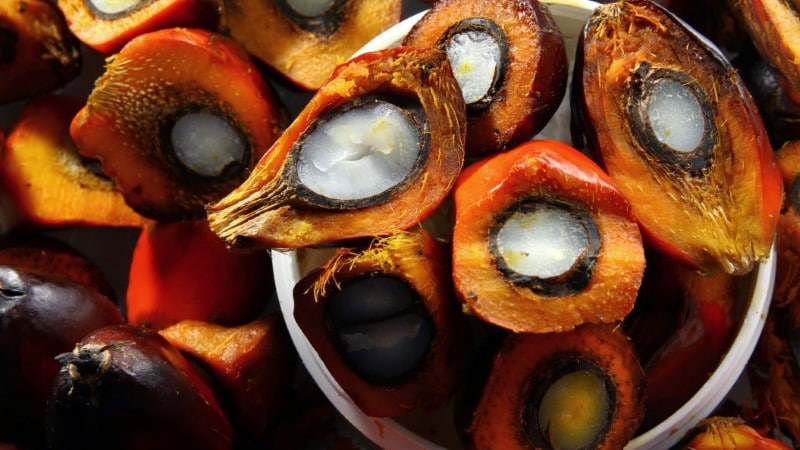
The scientific name of oil palm is Elaeis guineensis. The edible vegetable oil is derived from the mesocarp fruit of oil palms, and it is a reddish pulp. Oil palm trees are found in two varieties. One is from Africa and the other from South America. The oil palm tree is not consumed fresh, but it is used to produce vegetable oil. The vegetable oil is often used to process food for making cereals, pastries, cookies, peanut butter, ice cream, bread, margarine, and chocolate confections. It is also used in regular cooking. Oil palm is also used in cleaning products, cosmetics, candles, soaps, biofuels, shampoos, pharmaceuticals, and candles.
An amazing fact about oil palm is that it is the most reliable oil crop globally. Oil palm made about 33% of the global oils used and extracted from oil crops. When cooking with oil palm, it is easy to stabilize and maintain its flavor quality. The most prominent oil palm producers are Malaysia, Nigeria, Indonesia, and Thailand.
The oil palms have been used by people for over 5000 years. The oil palm has a natural red color due to the high beta-carotene content. It differentiates from palm kernel oil by lacking carotenoid and pigment. Palm kernel oil does not have a red color. Oil palm is a vegetable fat that is highly saturated and is usually semi-solid when at room temperature. It turns solid at room temperature making it an affordable substitute for hydrogenated vegetable oils and butter.
Oil palm is popular in the food industry worldwide due to its affordable purchasing price and high oxidative stability, otherwise known as saturation when frying. To extract oil palm oil from the fruit, it is usually cold-pressed and then bottled to be used as cooking oil, vegetable oil, and mayonnaise.
Oil palm is a rich source of nutrients such as vitamin E, sterols, fat, beta-carotene, lycopene, and alpha-carotene. Consuming oil palm has several health benefits for its consumers, such as reducing the risk of arterial atherosclerosis, reducing blood pressure, and inhibiting endogenous cholesterol biosynthesis.
If you wish to purchase oil palm, you can easily find it in whole food markets in the united states.
The Final Letter
The above is just about all there is on vegetables beginning with the letter o. Enjoy this extensively researched list of fruits that start with the letter o. when you finish reading this article. You will be able to identify unique vegetables beginning with the letter o just by their appearance, taste, and smell. Your identification of the vegetables will not be based on their names only. You will also be able to know the origin of the vegetables, their nutritional value, their scent, the health benefits that come from eating the vegetable, where you can buy them, their flavor, and even recipes you can include the vegetables in. This detailed list will give you the benefit of broadening your diet and discovering new wonderful recipes that you can try with these vegetables.
